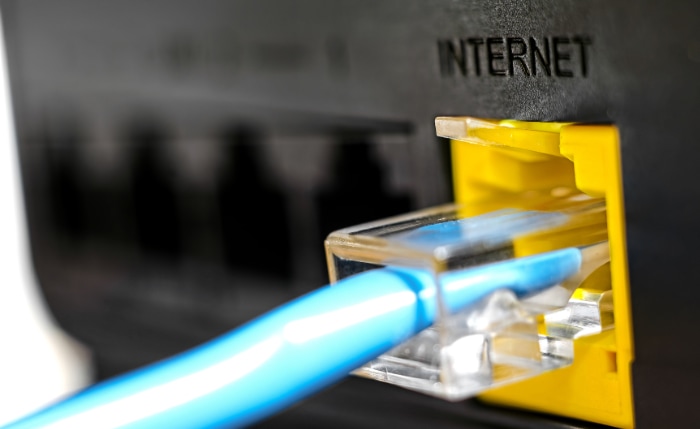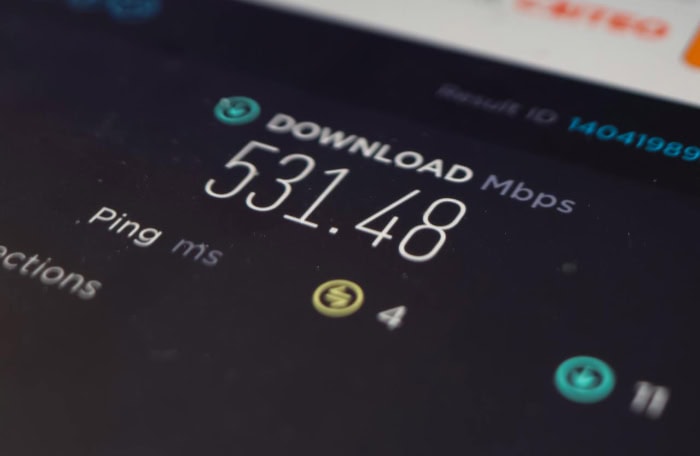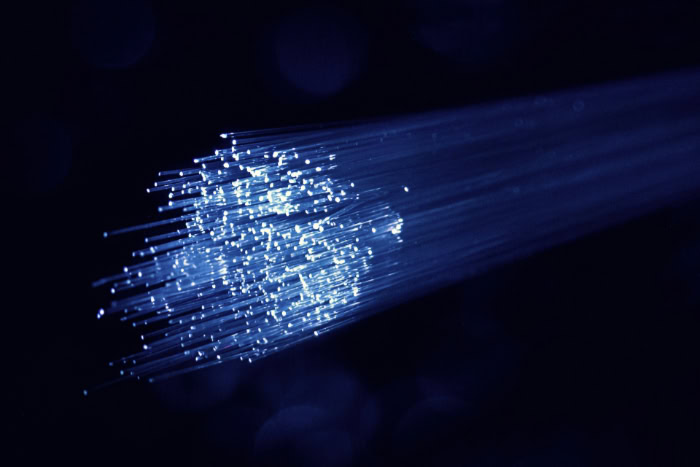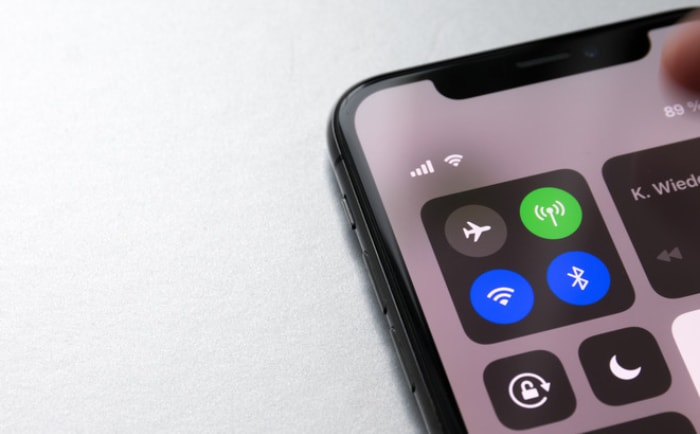Fiber vs. Cable: Speed, Cost, and Reliability Compared

Fast, stable internet is not a luxury anymore. It keeps homes running and businesses producing, from 4K streaming and cloud backups to video calls that cannot freeze.
Choosing between fiber and cable can feel simple on the surface, yet the tradeoffs affect speed, reliability, and long‑term value.
This guide breaks down how each technology works, what performance feels like day to day, and how pricing and installation actually play out. You will see how fiber’s glass strands and cable’s coax handle signals, where congestion happens, and why upload speed and latency matter for gaming, creative work, and remote teams.
Technology Fundamentals
Choosing between fiber and cable starts with how each one moves data from point A to point B. Materials, signal type, and network design shape what speeds you can get, how stable your connection feels, and how service holds up as more neighbors come online.
Signal Transmission and Media
Fiber moves data as pulses of light through hair‑thin strands of glass or plastic. Light signals travel with very little loss, which allows high speeds over long distances.
The glass is immune to electromagnetic interference, so nearby power lines, appliances, or weather have little impact on the signal. Providers can also send multiple wavelengths of light down the same strand, multiplying capacity without laying more cable.
Cable internet uses electrical signals over coaxial cable, the same medium long used for television. Copper carries radio‑frequency signals that degrade over distance and can pick up noise from external sources.
Shielding helps, yet interference from aging connectors, moisture in lines, or congested neighborhood nodes can still affect performance. Modern standards like DOCSIS push coax to higher throughput, but the medium’s physics favor downstream capacity more than upstream.
Network Architecture
Fiber to the Home, often called FTTH, typically runs fiber optic lines all the way to your residence or building. The provider terminates the line at an optical network terminal, which converts light to Ethernet for your router.
Many FTTH deployments use passive optical networks that split a single fiber from the provider into multiple customer lines with no powered equipment in the field. Splits are engineered to maintain high capacity and low latency, and the fiber path remains fiber end to end.
Hybrid Fiber Coax, or HFC, brings fiber to neighborhood nodes, then hands off to coax for the final stretch to homes. That design leverages existing coax plant, which reduces build costs and speeds up availability.
Capacity from the node is shared across the homes it serves, and performance depends on how many users are active and how the provider allocates channels. Upgrades like node splits, mid‑split or high‑split return paths, and newer DOCSIS versions can improve speeds and uploads, yet the last mile remains coax.
Capabilities and Physical Constraints
Fiber offers large bandwidth headroom, very low signal loss, and resistance to external noise. High throughput is achievable in both directions, which supports symmetrical speed plans.
Long runs are viable without repeaters, and future upgrades often involve changing electronics at each end instead of replacing the glass. Environmental factors like lightning, electromagnetic fields, or temperature swings have minimal effect on the signal itself, though fiber strands require careful handling to avoid bends that exceed their tolerance.
Cable over coax delivers strong downstream rates and wide availability, especially where television infrastructure is already in place. Physical constraints show up in higher attenuation over distance, more sensitivity to interference, and asymmetric capacity shaped by how spectrum is split between download and upload.
Performance can vary more during peak hours because segments of the HFC network are shared among many subscribers. Weather, moisture ingress, loose fittings, and aging taps can introduce noise that reduces usable throughput until maintenance occurs.
Performance Comparison

Real‑world internet quality shows up in everyday tasks. Page loads, file uploads, game responsiveness, and video call stability all trace back to speed, latency, and how well a network holds up as more people use it.
Fiber and cable can both feel fast under light use, yet differences become obvious during busy hours or upload‑heavy work.
Speeds
Fiber plans commonly start around 300 to 500 Mbps and scale to 1 Gbps, 2 Gbps, or even higher in some areas. Uploads typically match downloads, so cloud backups, large file transfers, and live streaming run at full speed in both directions.
That symmetry helps households with multiple video calls or creators pushing content to the cloud, since uploading no longer strangles the rest of the network.
Cable plans often range from 100 to 1200 Mbps on downloads, with uploads that are a fraction of that, often 10 to 100 Mbps depending on the tier and network upgrades in place. Streaming and general browsing feel quick, as most activity is download‑heavy.
Large uploads can become the bottleneck, and hitting the upload ceiling may slow web pages or cause choppy calls because the return path is congested. Providers continue to raise speeds through newer DOCSIS standards and return‑path expansions, yet symmetry remains rare on coax.
Latency and Jitter
Latency measures how long data takes to travel, and jitter measures how much that delay swings around from moment to moment. Lower and steadier values keep games responsive and voices on calls crisp. Fiber’s light‑based path usually produces single‑digit to low double‑digit milliseconds to common destinations, with minimal variation.
That consistency keeps aiming in shooters precise, reduces echo on calls, and helps real‑time collaboration tools feel snappy.
Cable can deliver solid latency, often in the teens to low twenties under ideal conditions, but jitter tends to rise as neighborhood traffic builds. Electrical noise, congestion at the node, and queuing in upstream channels introduce delay spikes.
Most streaming apps buffer around bumps, so movies still look fine. Fast‑twitch gaming and interactive whiteboarding notice the hits, especially during busy periods.
Consistency Under Load
Speed tests run at noon on a weekday tell one story, while dinnertime usage across a neighborhood tells another. Fiber’s architecture and high upload capacity keep performance closer to rated speeds during peak hours.
Large file uploads do not crowd out web browsing, and multiple video calls can share the line without breaking up. Even with many neighbors online, the network’s design and headroom typically hold jitter and packet loss in check.
Cable shares node bandwidth among nearby homes, which can lead to slower bursts and higher latency when everyone streams or downloads at once. Upload constraints magnify the effect.
One user syncing a large photo library can saturate the return path, causing choppy calls or sluggish web pages for others in the same home. Modern channel bonding, node splits, and better traffic management help, yet peak‑hour slowdowns remain more common on coax than on fiber.
Cost Analysis

Cost shapes the choice as much as performance. Monthly rates, contract terms, and equipment fees vary by provider and region, and promotional pricing can make the first year look very different from year two.
Fiber and cable often overlap on entry pricing, then diverge as speeds increase and as upload needs grow. Looking beyond the sticker price helps reveal real value over time.
Monthly Service Pricing
Entry‑level fiber plans often start competitively, sometimes matching or slightly undercutting cable for similar download speeds. Symmetrical uploads come included, which can remove the need to buy a higher tier just to get faster send speeds.
Mid and premium fiber tiers step up to gigabit and multi‑gig service, usually with straightforward pricing that remains stable for longer, though taxes and fees still apply.
Cable commonly advertises aggressive promos for the first 12 to 24 months on popular download tiers. After the promo ends, base rates rise, and equipment rental fees can push the bill higher.
Upload speed increases may require moving to higher tiers, which adds cost even if download capacity is already sufficient. Bundles with TV or mobile can soften the price, yet commitments and add‑on fees deserve a close look.
Installation and Equipment Costs
Fiber installations may involve running a new drop from the street, placing an optical network terminal on an inside or outside wall, and pulling Ethernet to your router’s location. Providers sometimes waive install fees during promotions.
If trenching or special conduit is required, build‑out charges can appear, especially for long driveways or multi‑unit buildings. The ONT typically comes included, and you can use your own router if compatible with the provider’s handoff.
Cable often uses existing coax runs, which shortens install time and reduces disruption. A technician verifies signal levels, updates fittings, and provides a DOCSIS modem if you rent one.
Buying your own compatible modem and a capable router can cut monthly fees over time. Older in‑home wiring or splitters may need replacement to reach higher tiers, and homes with many rooms on coax might benefit from a tidy rework to reduce signal loss.
Total Value Over Time
Value depends on the mix of speed, reliability, and future needs. Fiber’s symmetrical uploads and lower latency can let a household stay on a moderate tier without sacrificing work calls or cloud backups, which keeps monthly costs predictable.
Upgrades often require only a plan change and possibly a new router for multi‑gig, not a new line to the home.
Cable delivers strong download value in areas with competitive promos, which suits homes focused on streaming and browsing. Long‑term cost can rise after promo periods, and upload limits may push an upgrade sooner than expected for creators, remote workers, or households that share large files.
Owning a modem and a good router reduces recurring fees, and choosing a tier that fits real usage avoids paying for unused headroom.
Looking at two to three years of service reveals the fuller picture. Installation choices, equipment ownership, and how often you need to upgrade all contribute to total cost.
Fiber often wins on cost per performance for balanced workloads, while cable can be the budget pick for download‑heavy use, especially where promotions and bundles are strong.
Practical Considerations

Great performance only helps if service reaches your address and the install fits your home. Coverage varies by region, and the path to getting online can range from a quick visit to a multi‑step build.
Planning for equipment, Wi‑Fi placement, and any extra wiring avoids surprises and saves a second appointment.
Geographic Availability
Fiber coverage tends to be strongest in dense urban cores and expanding suburban corridors where providers can justify new builds. Newer neighborhoods and multi‑dwelling buildings often get fiber during construction, which simplifies future upgrades.
Rural areas see slower expansion due to long distances and higher costs per household, though some regions benefit from public or cooperative projects that push fiber deeper into small towns.
Cable reaches many more addresses due to decades of television infrastructure. Most suburbs and many small towns already have coax in place, so activation can be quick.
Truly remote locations may still lack cable plant, pushing residents toward fixed wireless or satellite options. Even inside cities, building access agreements can shape availability, so two providers on the same street may not serve the same apartment complex.
Installation Process and Timeline
Fiber typically requires a site survey, then a drop from the pole or underground conduit to your home. An optical network terminal is mounted on an exterior or interior wall, and a technician runs Ethernet to your router location.
Appointments usually take one to three hours if pathways are clear. Longer timelines appear if permits are needed, if underground work is required, or if property rules limit exterior cabling.
Clearing access to utility rooms, attic points, and desired router locations speeds the visit.
Cable installs are usually faster because existing coax can be reused. A technician tests signal levels, replaces worn connectors, and activates a modem.
Homes with old splitters or long coax runs might need cleanup to hit higher tiers. Scheduling can be next‑day in many markets, with the visit often completed in under an hour.
Unexpected delays happen when lines are damaged, taps are full, or signal quality from the street needs plant maintenance.
Equipment and Home Network Compatibility
Fiber service hands off via an ONT that provides Ethernet. Any modern router with a suitable WAN port will work, though multi‑gig plans benefit from 2.5G or 10G ports.
Some providers combine ONT and router, but you can often use your own gear in bridge mode. For homes with many devices, a Wi‑Fi 6 or Wi‑Fi 7 router plus wired backhauls for mesh nodes keeps speeds consistent across rooms.
Cable uses a DOCSIS modem paired with a router. Renting simplifies support, while owning a certified modem reduces monthly fees.
Match the modem to your speed tier to avoid bottlenecks, and use a router that can handle the expected throughput, especially on gigabit plans. Wi‑Fi performance hinges on placement, so put the primary router in a central, open spot away from thick walls and metal appliances.
For larger homes, consider a mesh system with Ethernet backhaul where possible. Running Ethernet to stationary high‑demand devices like desktop PCs, gaming consoles, or access points frees up wireless bandwidth and improves reliability.
Proper planning aligns service capability with your home’s layout. A clean install, a capable router, and thoughtful Wi‑Fi placement make a bigger difference than a headline speed figure on a busy evening.
Choosing the Right Fit

Picking fiber or cable works best when matched to how people in the home or office actually use the internet. Daily habits, number of users, types of applications, and growth plans all influence which option brings the most value.
Performance on paper helps, but real workloads tell you where upload speed, latency, and consistency matter most, and where a lower price for strong downloads might be enough.
Residential Use Cases
Households focused on streaming, social media, and general browsing often do well with cable, especially on tiers that deliver fast downloads. Multiple 4K streams, gaming downloads, and software updates ride on the downstream side, so a solid cable plan can feel quick and responsive for entertainment.
Upload limits may show up when a family member backs up photos to the cloud or when two people are on HD video calls at the same time.
Homes with remote work or school benefit from fiber’s symmetrical speeds and lower latency. Video conferences stay clear even if someone else is uploading files, and cloud apps remain smooth while background backups run.
Larger households see fewer slowdowns during peak hours because fiber maintains headroom when several devices compete. Creators who upload large videos, photographers syncing libraries, and live streamers gain obvious advantages from higher and steadier upload throughput.
Business Requirements
Small offices and storefronts often need reliable video calls, point‑of‑sale connectivity, and quick file access. Cable can meet those needs if traffic is mostly download‑heavy and upload demands are modest.
As soon as frequent uploads, offsite backups, or real‑time collaboration tools become central, fiber’s symmetry and lower jitter improve day‑to‑day operations.
Growing teams and production workflows rely on consistent performance during business hours. Fiber services commonly offer add‑ons like static IPs, higher service tiers, and options that approach enterprise reliability.
Some providers include stronger uptime commitments and faster repair windows on business plans. Even without formal SLAs, fiber’s design supports more predictable latency and better concurrency for cloud tools, remote desktops, and VoIP systems.
Scaling to multi‑gig becomes simpler with the right router and internal network, keeping future upgrades straightforward.
Decision Criteria
Start with workloads. List the applications that must perform flawlessly, then note how many people use them at the same time. Upload‑heavy activity, real‑time tools, and creator workflows point toward fiber. Entertainment‑centric use, single‑user homes, or tight budgets can make cable the practical choice, especially with strong promotions.
Consider long‑term costs across two or three years. Factor in promo roll‑offs, equipment rentals, and potential upgrades if upload limits become a bottleneck.
Fiber’s stability and symmetry may allow a lower tier that still covers remote work and backups, saving money without sacrificing quality. Cable may offer better short‑term pricing, and owning a compatible modem and router can trim monthly fees.
Look at growth and flexibility. If more people will work from home, if smart devices are multiplying, or if a business plans to add cloud services, fiber’s headroom and easy scaling bring peace of mind.
If service options are limited at a given address, pick the provider with the cleanest install, the most transparent pricing, and gear that can handle the chosen speed. A thoughtful match between needs, budget, and expansion plans leads to a connection that feels fast today and remains capable tomorrow.
Conclusion
Fiber and cable both deliver fast internet, but they differ in how they get there and how the connection feels day to day. Fiber sends light over glass, supports high uploads alongside downloads, and usually brings lower latency with steadier performance under load.
Cable uses electrical signals over coax, offers wide availability and strong download value, yet often has tighter upload limits and more variability during busy hours.
Match the choice to real needs. Homes centered on streaming and browsing can do well with a solid cable tier, especially with good promotions.
Remote work, creative uploads, cloud backups, live streaming, and latency‑sensitive gaming lean toward fiber for symmetry and consistency. For businesses, fiber’s predictability, upgrade path, and support for upload‑heavy workflows make operations smoother as teams grow.
Check local availability, actual street‑level options, and the quality of in‑home wiring. Compare promo rates against post‑promo pricing, equipment fees, and the router you will use.
Weigh today’s must‑have apps and tomorrow’s likely demands. The right fit balances performance, budget, and room to scale without surprises.


